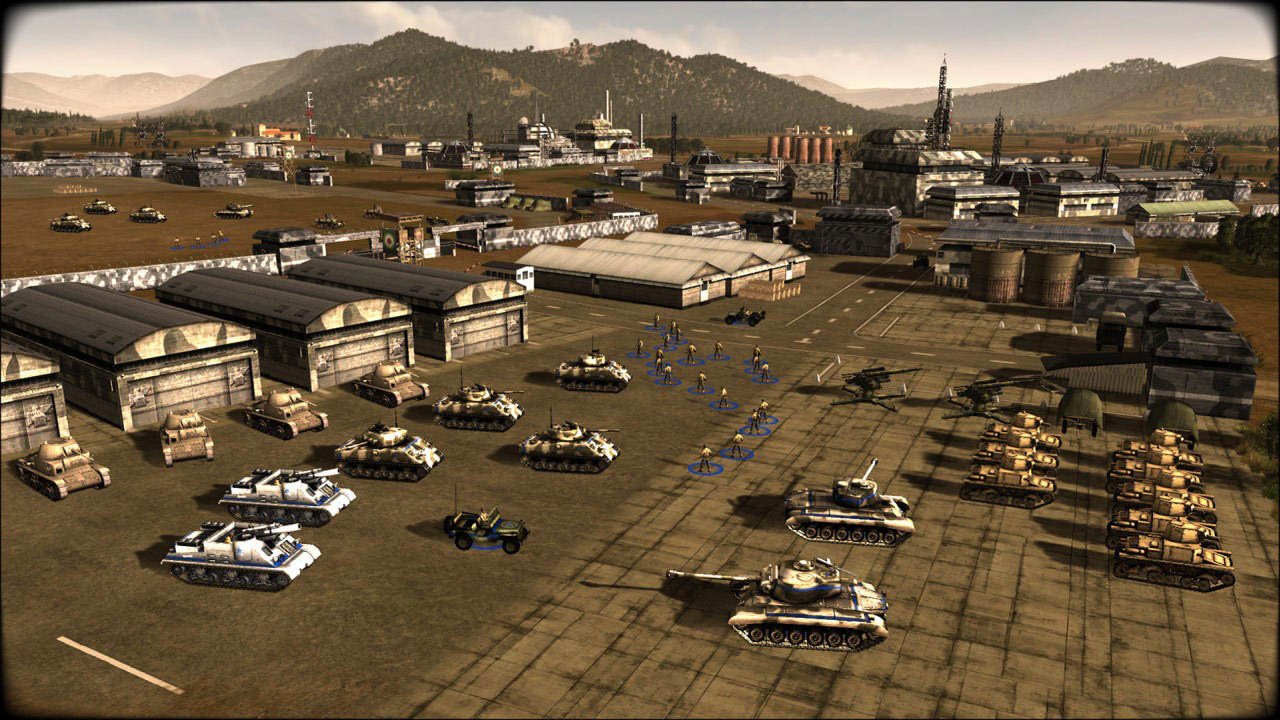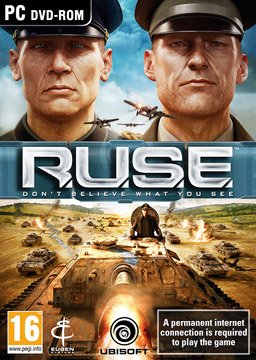Fight The Good Fight
It’s a pity that Eugen Systems didn’t have slightly more confidence in their game. It’s a small thing, but taking the title of their game and pointlessly making it an acronym can immediately set off warning signs with jaded or sceptical gamer This is compounded by the fact that said game is in the real-time strategy vein, a genre that has traditionally fared pretty badly on consoles thanks to a much faster and more efficient interface found on the RTS’s traditional home, a PC with a keyboard and mouse. It’s all the more surprising then when R.U.S.E. turns out to not just work, but provide one of the best RTS experiences on a console to date.
The Beaches Of Normandy Beckon Once More
First off, yes, this is another World War II game. The most famous war of the 20th century gets dragged out once again for set-piece battles in all the familiar locales, from the tank wars of Africa to the beaches of Normandy to the disaster of the Market Garden campaign. This time the war is viewed through the eyes of American strategist Joseph Sheridan, a Major who rises quickly through the ranks as he proves his talent for directing soldier The story here is workable, if a bit predictable with a plot twist telegraphed right in the opening cutscene and dragged out to the ¾ mark of the tale. After the galactic soap opera of Starcraft II, the workmanlike story of R.U.S.E. is tolerable at best, irritating at worst.
In the presentation department, R.U.S.E. continues to be a no-nonsense, functional game that is light on frill Being an RTS, you expect more of a “God’s Eye View” on things, without the insane detail of an FPS, and you get that. R.U.S.E. manages—with some performance hitches—to seamlessly allow you to zoom in so you seem to be only a hundred feet over the action. It then allows you to zoom all the way out an overall map of the battle zone, where the background now changes so that you’re peripherally aware that you’re actually in a comfortable military HQ, presiding over a strategy table. This is matched by the audio, that, at closer ranges, fills your speakers with the sound of tank treads grinding, planes zooming overhead and anti-air flak exploding in the skies, gradually morphing into the beeps and static of a military compound as you, the strategist, view the battle from your table. Voice acting in cutscenes is competent, though again, the largely unpolished story doesn’t give the actors much to work with. The music is what you’d expect from a military game, with a booming orchestra, martial rhythms and drums, punctuated by a lot of horns to emphasize the “military-ness” of the experience. Aesthetically, R.U.S.E. does what it needs to, but no more than that.
War Is Hectic
An important note that needs to be made about R.U.S.E. is that there are essentially three ways to play the game. It’s a traditional RTS on the PC with the expected mouse and keyboard set-up and for people that want the absolute best control set-up, this is obviously the preferred option. Then there’s the traditional console set-up on the PS3 and Xbox 360, and surprisingly, it work The left analog stick moves the camera, while the right stick rotates and zooms in and out. R.U.S.E. is a more thoughtful, measured—though no less frantic—RTS and so selecting your units by centering them in the camera will get the job done. However, the PS3 has the option of using the new Move control system, and if you’re limiting yourself to a console version, R.U.S.E., enabled with Move, is the absolute best way to play on console It’s still not quite as fast and precise as a mouse and keyboard, but it gets reasonably close and allows you to play the game the way it was intended. It also gives you a slight advantage in multi-player if you can select units faster than your traditional controller-wielding opponent
The game itself lives up to its title with the central mechanic being the use of “Ruse cards” that are assigned to you from headquarter These cards do everything from hide your HQ from enemy intelligence, to drowning an area in propaganda to make enemies more prone to retreating. Far from being a gimmick, they are absolutely vital to winning the many varied battles R.U.S.E. puts you through. R.U.S.E. truly is a war of intelligence, and in the single-player mode, creates very specific conditions of battle that rarely stray into the traditional “destroy that base to win” scenario symptomatic of most RTS game Players can start rounds with little more than a group of infantry and some anti-tank guns and be forced to rapidly improvise from there, with the various Ruse Cards being played out to ensure survival and even re-direct the enemy away from your weakened forces with decoys until you can build up a proper defense. This is complemented by a complex system of paper-rock-scissors gameplay that allows for some incredibly creative use of combined arms strategy and significantly negates the ability to Zerg opponents with sheer number
One thing that players need to keep in mind is that this game is built, from the ground up, with experienced RTS gamers in mind. While things are relatively manageable in the early levels at normal difficulty, later levels quickly demand that you think fast and multi-task faster. If ever there was an argument against waging a two front war, R.U.S.E. is it, when you find yourself in a near panic fighting off enemies from multiple directions because you failed to routinely check to see if paratroopers had landed behind your lines to quietly build bases or set up ambushe This is all quite clearly seen in the multi-player, which sports traditional one on one, two on two and even co-op matches in the various operations and ranked matche Here, experienced players can show off a stunning amount of ingenuity, particularly in team matches, with coordinated efforts to distract, confuse and outthink opponents in battle
The RTS has always had a tough time of translating over to console play. While R.U.S.E. lacks the sheer variety and consistent, across-the-board production values and design of Starcraft II, it manages to surprise RTS fans with one of the best titles in the genre on a current generation console. It is complex, and opens up a massive toybox of strategic possibility for armchair general If, for whatever reason you love RTS games, but only have a console, this is one you need to add to your collection.






